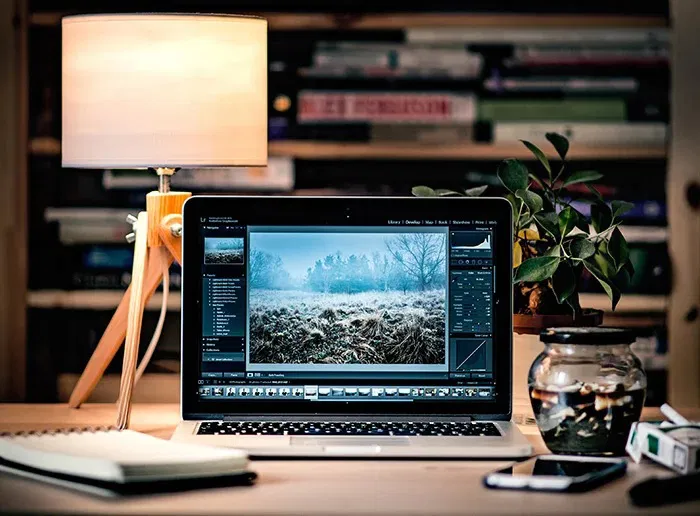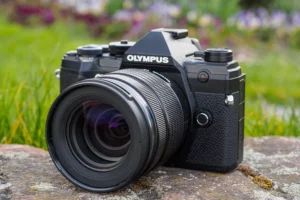Introduction to Adobe Lightroom
Adobe Lightroom is the go-to software for photographers looking to transform their images with precision and ease. Whether you’re enhancing a sunset portrait or tweaking a travel snapshot, Lightroom’s intuitive tools make photo editing accessible yet powerful. This guide dives deep into mastering Lightroom, sharing practical tips, personal insights, and step-by-step techniques to elevate your photography game in 2025.
What is Adobe Lightroom?
Lightroom is a photo editing and organization software designed for photographers of all skill levels. Available in Classic and Cloud-based versions, it offers non-destructive editing, meaning your original images stay untouched while you experiment. Its seamless integration with Adobe Photoshop and mobile apps makes it a favorite for both amateurs and pros.
Lightroom Classic vs. Lightroom CC
Lightroom Classic is desktop-focused, ideal for detailed workflows and large photo libraries, while Lightroom CC emphasizes cloud storage and mobile accessibility. Classic suits professionals needing robust tethering and batch editing, whereas CC appeals to casual users prioritizing sync across devices. Choose based on your workflow—Classic for depth, CC for flexibility.
Why Choose Lightroom for Photo Editing?
Lightroom’s strength lies in its non-destructive editing, presets for quick adjustments, and powerful organization tools. Unlike Photoshop, it’s beginner-friendly yet sophisticated enough for pros. Its ability to handle RAW files and streamline workflows makes it a must-have for photographers aiming for efficiency and quality.
Getting Started with Lightroom
Setting up Lightroom is straightforward, but a solid foundation ensures a smooth editing experience. From importing photos to organizing your library, these initial steps set the tone for creative success. Let’s walk through the essentials to get you started on the right foot.
Installing and Setting Up Lightroom
Download Lightroom from Adobe’s official site and choose a plan—Photography Plan ($9.99/month) includes both Lightroom versions and Photoshop. After installation, set up your workspace by customizing the interface and syncing preferences. A clean setup saves time and reduces frustration during edits.
Importing Photos
Importing is your first step in Lightroom’s workflow. Connect your camera or memory card, open the Library module, and select “Import.” Choose your photos, set a destination folder, and add keywords for easy searching later. Pro tip: Use “Copy” instead of “Move” to keep originals safe on your device.
Organizing Your Photo Library
A well-organized library is a game-changer. Create collections to group photos by project or theme, and use star ratings or flags to prioritize keepers. For example, I once spent hours sifting through unrated vacation shots—now, I tag favorites immediately to streamline editing.
Understanding Lightroom’s Interface
Lightroom’s interface is divided into modules: Library, Develop, Map, Book, Slideshow, Print, and Web. The Develop module is where editing magic happens, while Library handles organization. Familiarizing yourself with these modules ensures you navigate like a pro.
Library Module Overview
The Library module is your hub for importing, organizing, and previewing photos. Use Grid View to browse thumbnails or Loupe View for a closer look. Filters like metadata or ratings help you quickly find specific images, saving time for creative work.
Develop Module Breakdown
The Develop module is Lightroom’s editing powerhouse. Here, you’ll find tools for adjusting exposure, color, and details, plus presets for quick styles. Its intuitive sliders and panels make it easy to experiment without overwhelming beginners.
Basic Editing Techniques in Lightroom
Basic edits lay the groundwork for stunning photos. Whether you’re tweaking exposure or cropping for composition, these foundational tools are where most edits begin. Let’s explore the essentials with practical tips to enhance your images.
Adjusting Exposure and Contrast
Exposure controls overall brightness, while contrast defines the range between lights and darks. In the Develop module, slide the Exposure bar to brighten or darken, and boost Contrast for punchier images. For a moody portrait, I once dialed down Exposure slightly and bumped Contrast to make features pop.
Cropping and Straightening
The Crop tool, found under the histogram, lets you refine composition or straighten horizons. Use the Rule of Thirds overlay to guide placement of key elements. A quick crop can turn a cluttered landscape into a focused masterpiece—try it on your next scenic shot.
White Balance for Color Accuracy
White Balance corrects color casts to ensure natural tones. Use the eyedropper to select a neutral area (like a white wall) or adjust Temperature and Tint sliders manually. For a warm sunset glow, nudge Temperature toward yellow, as I did for a beach photo that felt flat initially.
Advanced Editing Techniques
Once you’ve mastered the basics, advanced tools like tone curves and selective adjustments take your edits to the next level. These techniques offer precision, letting you craft a signature style. Let’s dive into the tools that make your photos stand out.
Using the Tone Curve
The Tone Curve adjusts specific tonal ranges—highlights, midtones, shadows—for nuanced control. Create an S-curve for vibrant contrast or flatten it for a matte look. I once used a gentle S-curve to give a wedding photo a dreamy, cinematic feel without overdoing it.
Local Adjustments with Brushes and Gradients
The Adjustment Brush and Graduated Filter allow targeted edits. Brighten a subject’s face with the brush or darken a sky with a gradient. For a portrait, I brushed on extra sharpness around the eyes, making them pop against a softly blurred background.
Color Grading for Mood
Color Grading in the Develop module lets you tweak shadows, midtones, and highlights with color wheels. Add a teal tint to shadows for a moody vibe or warm up highlights for golden-hour magic. Experimenting with this tool transformed my cityscape shots into vibrant art pieces.
Working with Presets and Profiles
Presets and profiles are Lightroom’s shortcuts to consistent, professional looks. They save time and inspire creativity, especially for beginners. Here’s how to leverage them effectively in your workflow.
What Are Presets?
Presets are pre-saved editing settings you can apply with one click. Lightroom offers built-in presets, or you can download custom ones from creators like VSCO or Peter McKinnon. I use a custom preset for my travel photos to maintain a cohesive Instagram feed.
Creating and Saving Your Own Presets
After editing a photo, save your settings as a preset for future use. In the Develop module, click the “+” icon in the Presets panel, name your preset, and select which adjustments to include. This is perfect for batch-editing similar shots, like a series from a single shoot.
Using Profiles for Creative Effects
Profiles, found in the Basic panel, apply color and tone adjustments without altering sliders. Adobe’s Creative profiles, like Artistic or Vintage, add instant flair. I once used the Vintage profile on a portrait to give it a nostalgic, film-like quality.
Comparing Lightroom to Other Editing Software
To understand Lightroom’s value, let’s compare it to competitors like Photoshop, Luminar Neo, and Capture One. Each has strengths, but Lightroom’s balance of simplicity and power makes it unique.
| Software | Best For | Price | Learning Curve | Key Feature |
|---|---|---|---|---|
| Lightroom | Workflow, organization, editing | $9.99/month | Moderate | Non-destructive editing |
| Photoshop | Advanced retouching, composites | $22.99/month | Steep | Pixel-level precision |
| Luminar Neo | AI-driven edits, creative effects | $11.95/month | Easy | AI Sky Replacement |
| Capture One | Pro color grading, tethering | $24/month | Steep | Superior RAW processing |
Lightroom vs. Photoshop
Lightroom excels in batch editing and organization, while Photoshop is better for detailed retouching, like removing objects or creating composites. For quick edits, I stick to Lightroom, but I switch to Photoshop for intricate portrait retouching, like smoothing skin.
Lightroom vs. Luminar Neo
Luminar Neo’s AI tools, like Sky Replacement, are great for quick, dramatic edits, but Lightroom offers more control and a robust workflow. If you prioritize speed, Luminar’s AI is tempting, but Lightroom’s depth keeps me coming back for professional results.
Pros and Cons of Using Lightroom
Pros
- Non-Destructive Editing: Originals stay safe, letting you experiment freely.
- Streamlined Workflow: Combines organization and editing in one platform.
- Presets and Profiles: Save time and ensure consistent looks across projects.
- Cross-Platform Sync: Edit on desktop, mobile, or web with Lightroom CC.
- RAW File Support: Handles high-quality files for maximum detail.
Cons
- Subscription Cost: Monthly fees can add up compared to one-time purchases like Luminar Neo.
- Learning Curve: While beginner-friendly, mastering advanced tools takes time.
- Storage Needs: Large libraries require significant disk space or cloud storage.
Tips for Efficient Lightroom Workflow
Efficiency is key to making Lightroom work for you. These tips, honed from years of editing, will save time and boost creativity.
- Batch Edit: Apply adjustments to multiple photos at once in the Library module. Sync settings across a shoot to maintain consistency.
- Use Shortcuts: Learn keyboard shortcuts, like “R” for Crop or “G” for Grid View, to speed up navigation.
- Backup Regularly: Export your catalog to an external drive to avoid losing edits. I learned this the hard way after a computer crash wiped out a month’s work.
- Leverage Mobile Editing: Use Lightroom’s mobile app for on-the-go tweaks, perfect for quick Instagram posts.
- Experiment with Presets: Test different presets to discover new styles without hours of manual adjustments.
Best Tools and Resources for Lightroom Users
To maximize Lightroom’s potential, explore these tools and resources:
- Adobe Tutorials: Free guides on Adobe’s Help Center cover everything from basics to advanced techniques.
- Preset Packs: Invest in quality presets from creators like Mastin Labs for film-like looks.
- Lightroom Mobile: Free with your subscription, available on iOS and Android for editing anywhere.
- External Drives: Brands like SanDisk offer reliable storage for large photo libraries.
- Online Communities: Join forums like Reddit’s r/Lightroom for tips and inspiration.
People Also Ask (PAA)
What is the best way to learn Lightroom?
Start with Adobe’s free tutorials or YouTube channels like PHLEARN. Practice on your own photos, experimenting with basic tools like exposure and cropping before diving into advanced features like tone curves.
Can beginners use Lightroom effectively?
Yes, Lightroom’s intuitive interface makes it beginner-friendly. Start with presets and basic sliders, then gradually explore local adjustments. Consistent practice, like editing one photo daily, builds confidence quickly.
How do I get Lightroom for free?
Lightroom isn’t free, but Adobe offers a 7-day trial via their website. For long-term use, the Photography Plan ($9.99/month) is cost-effective, including Lightroom and Photoshop.
What’s the difference between Lightroom and Photoshop?
Lightroom focuses on photo organization and non-destructive editing, ideal for quick adjustments and workflows. Photoshop offers pixel-level precision for advanced retouching, like removing objects or creating composites.
A Personal Editing Story
When I started photography, I was overwhelmed by Lightroom’s sliders and panels. My first attempt at editing a sunset photo left it looking like an overprocessed postcard—too orange, too saturated. But after watching tutorials and experimenting, I learned to balance exposure and color grading. Now, every time I edit a golden-hour shot, I feel a rush of pride seeing the colors pop just right. Lightroom’s learning curve is real, but the results are worth it.
Troubleshooting Common Lightroom Issues
Even seasoned users hit snags. Here are solutions to frequent problems:
- Slow Performance: Optimize your catalog by reducing preview sizes and clearing cache in Preferences. A faster SSD drive also helps.
- Sync Issues: Ensure a stable internet connection for Lightroom CC. Check Adobe’s Sync Status for server issues.
- Lost Edits: Always back up your catalog to avoid losing adjustments. Use cloud sync for added security with Lightroom CC.
- Color Casts: Reset White Balance and use the eyedropper on a neutral area to correct unexpected tints.
Exporting and Sharing Your Photos
Once your edits are complete, exporting is the final step. In the Library module, select “Export,” choose your file format (JPEG for web, TIFF for print), and adjust quality settings. For Instagram, I export at 1080px width with 80% quality to balance size and clarity.
Optimizing for Different Platforms
- Social Media: Export JPEGs at 72 DPI with sRGB color space for vibrant online display.
- Print: Use TIFF or high-quality JPEG at 300 DPI for sharp prints. Check with your printer for specific requirements.
- Portfolio: Save in Adobe RGB for richer colors if showcasing on professional platforms like Behance.
FAQ
How long does it take to learn Lightroom?
With consistent practice, beginners can grasp basics in a week and advanced tools in a month. Daily editing and tutorials accelerate the process.
Can I edit videos in Lightroom?
Lightroom supports basic video trimming and color adjustments, but it’s not a full video editor. For complex edits, use Adobe Premiere Pro.
Is Lightroom worth the subscription cost?
For photographers, Lightroom’s non-destructive editing and workflow tools justify the $9.99/month cost, especially when bundled with Photoshop.
How do I make my photos look professional in Lightroom?
Focus on balanced exposure, subtle color grading, and targeted adjustments like sharpening eyes or enhancing skies. Presets can also give a polished, cohesive look.
Where can I find free Lightroom presets?
Sites like PresetLove offer free presets, though premium options from creators like VSCO provide more refined results.
Conclusion
Mastering Lightroom is like unlocking a treasure chest of creative possibilities. From basic exposure tweaks to advanced color grading, its tools empower you to transform ordinary photos into extraordinary art. Whether you’re a beginner tweaking vacation snaps or a pro crafting a portfolio, this guide equips you with the skills to shine. So, fire up Lightroom, experiment with those sliders, and let your photos tell stories that captivate the world.


